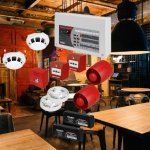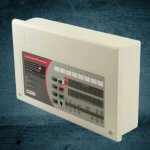BS 5839-1:2025 – Latest Updates to Fire Alarm Standards in the UK
The British Standards Institution released the updated BS 5839-1:2025 on 30 April 2025, revising the 2017 version. This standard governs the design, installation, commissioning, and upkeep of fire alarm systems in non-domestic properties across the UK.
What Does BS 5839-1 Cover?
BS 5839-1 is the UK standard detailing fire alarm system requirements for commercial and other non-residential buildings. It’s referenced within the Building Regulations’ Approved Document B and covers system classifications, key components, installation locations, performance expectations, and maintenance protocols to ensure safety and compliance.
Key Changes Introduced in 2025
- Detector Types in Sleeping Areas
The new guidance prefers smoke detectors over heat detectors in sleeping accommodation, including hotels, care homes, and student housing, to ensure earlier fire detection. - Extended Category Coverage
Lift shafts must now be incorporated in L4 system designs. Detection requirements have also expanded to include certain low-risk lobby areas based on system category. - Manual Call Point Installation
More detailed recommendations now specify that call points be located in spaces regularly occupied by people, enhancing accessibility and reducing false alarms. - Lockdown Alarm Integration
Panels can feature distinct lockdown alert tones that remain easily distinguishable from fire alarms to avoid confusion during emergencies. - Handling Obstructions on Ceilings
Installers are required to consider physical barriers like beams or ducting that may shadow detectors, eliminating blind spots in coverage. - Reduced Monitoring Timeframes
Automatic systems must alert within 90 seconds upon activation and report faults within 3 minutes to speed up emergency response. - Updated Battery and Cable Standards
Red-coloured mains cables are now mandatory for easy identification. The method for sizing battery backups has been updated, necessitating recalculations for existing setups. - Focus on Visual Alarm Devices
There is increased emphasis on visual alarms to better assist occupants who are deaf or hard of hearing. - Mandatory Zone Plans for Multi-Zone Sites
Zone plans must be clearly displayed near control panels in buildings with multiple zones to facilitate quick identification of fire locations. - Residential Care Fire Alarm Enhancements
Fire alarms in residential care settings must now automatically notify a central monitoring station to ensure a prompt response. - Service Interval Flexibility and Maintenance Requirements
Servicing can now occur within a 5–7 month window rather than strictly every 6 months. Maintenance must include clock synchronization, log updates, removal of obsolete devices, and user-friendly interfaces. Technicians should keep up with Continuing Professional Development (CPD). - Revised Documentation and Certification
All related paperwork, logs, and certificates have been updated. Formal Modification Certificates are now required for any system changes, and any deviations must be recorded and logged.
Why These Updates Matter
The 2025 revision brings important improvements including:
- Quicker detection and response, especially in sleeping areas
- Enhanced maintenance flexibility and clearer service standards
- Increased inclusivity via improved visual alarms
- Strengthened professional standards with updated documentation and training requirements
For those managing fire safety in commercial or residential care properties, understanding and implementing BS 5839-1:2025 is essential to maintain compliance and safeguard occupants.




